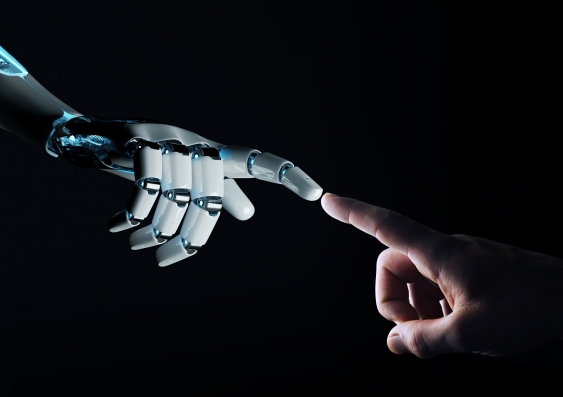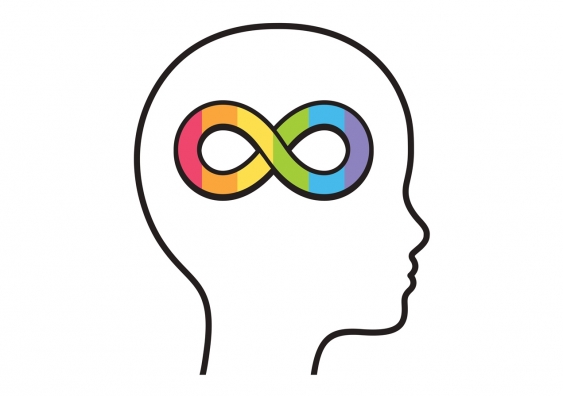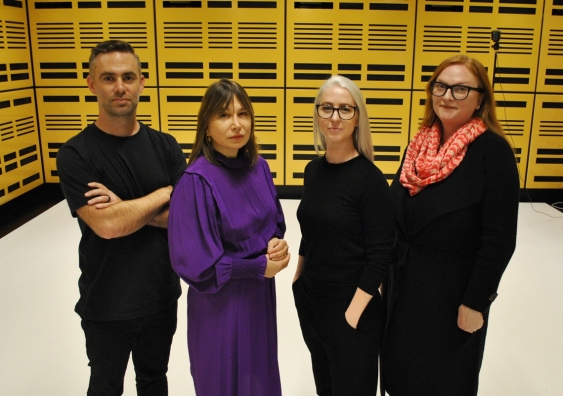Social robotics can help us move towards a more inclusive society
Social robotics can make social life more accessible to a greater diversity of people, says Professor Mari Velonaki.Â
Social robotics can make social life more accessible to a greater diversity of people, says Professor Mari Velonaki.Â

A team of designers, psychologists, audio consultants and robotics specialists has developed an inclusive sound environment that helps people with neurodiversity enjoy live music.
The application distributes sound through multiple channels to create auditory experiences that are exciting without being overwhelming. The interface, a creative collaboration between Dickens Audio, the and the Â鶹Éçmadou Creative Robotics Lab, will be co-designed with people with neurodiversity.
“Enjoyment of music should be afforded to everyone,” says project lead Dr Scott Brown from the Â鶹Éçmadou Creative Robotics Lab. “However, neurodivergent people often process sensory input in unique ways, impacting their opportunity to enjoy music in public spaces.
“Traditional performance venues and approaches to sound and visuals can be overwhelming for many people. Our goal in this project is to create an experience that is not only inclusive, but adaptive to individual preferences.”
. The umbrella term includes people with autism spectrum disorder, dyslexia, ADHD, Tourette’s syndrome, dyscalculia (difficulty applying maths principles) and dysgraphia (difficulty converting language sounds to text).

Social robots can help neurodiverse people with social experiences. Photo: Shutterstock.
Variances in neurodiverse presentations means there’s no such thing as a one-size-fits-all solution, says Dr Brown, who specialises in interactive technologies for people with neurodiversity.
“We are starting to see adoption and scheduling of sensorily adaptive spaces, from quiet rooms at sporting events to movie screenings with reduced volume and gentle lighting,” he says. “These small changes allow many more people the chance to experience the wellbeing associated with all kinds of cultural events.”
Dr Belinda Dunstan, who specialises in designing for diversity, social robot appearance design and technology ethics, and , an expert in curatorial and exhibition/event design, technology and new media, research leads in the Creative Robotics Lab, are also collaborating on the two-year project.
The project is informed by the Lab’s overarching strategy to develop technological systems that improve and enhance the human experience.
“This is a project that to me is very important, because it's about perceptions of music and the culture that distributes this music,” says the Lab’s founder and director, . “It’s about expanding the live space – that’s one of my priorities – so more people can participate in different social activities.”
Rather than the malevolent sci-fi model where robots replace humans, Prof. Velonaki’s vision pivots on their altruistic potential to democratise space and uplift human capacity. The social robotics pioneer says compelling human-robot interactions can help us move to a more inclusive society.
“Social robotics are robotic systems designed with the public as user. [They’re] designed to interact with society in their daily activities and hopefully enhance those activities,” she says. “They can enable richer and more immersive experiences, regardless of an individual’s embodied capability.”
Rather than developing experiences for select groups, such as people living with disabilities or dementia, “we should be designing systems for all humans … creating environments where different groups can coexist”, she says.
Semi-automated cars can increase social connection and independence
Assistive technologies in cars are one such inclusive interface. They can help older drivers, for example, stay socially connected and independent, Prof. Velonaki says.
She is collaborating on an international research project examining how cognitive changes in older drivers affect their use of assistive driving technologies.
The project, led by , Director of the Â鶹Éçmadou Ageing Futures Institute and an ARC Laureate Fellow, draws together expertise across transport innovation, the psychology of ageing, and robotics with industry partners, insurance company, Suncorp Australia, and National Seniors Australia.
“We are looking at how drivers adapt from their old car to [different models of] cars with semi-automation… monitoring how they recover from bad performance [in response to different robotic interfaces],” she says. For example, whether drivers respond better to a flashing light, a sound alert or a voiced command.

A team of designers, psychologists, audio consultants and robotics specialists make up the Creative Robotics Lab. Image: Â鶹Éçmadou Creative Robotics Lab.
The three-year project, supported by an Australian Research Council Linkage Grant, will conduct an analysis of insurance claims databases, a large consumer survey and a naturalistic driving study to gather evidence on how ageing and cognition interact with assistive technology in cars.
The research will inform older drivers, government policy makers and industry and assist in enhancing road safety.
Prof. Anstey says: “This study aims to enhance safety for older drivers by promoting optimal driving in cars with new technology… [and] also provide benefits for the wellbeing of older adults by keeping them mobile for longer.”
Prioritising a human-centred approach
The Lab’s industry collaborations have broad reach, from developing a social robot to aid collaboration within office environments in partnership with Fuji Xerox to creating a technological interface to improve cognitive performance and resilience with the Australian Army.
A walking frame that doubles as an assistive device that re-directs users home can help someone with dementia regain the confidence to step outside their front door, she says.
These projects have more in common than you might think, she says. Despite their diverse situational context, aesthetics and personalisation remains intrinsic to their design.
“[They] are human-centred, [they] respect the privacy of the individual – they are non-intrusive – and [they] are influenced by art and design principles to promote engagement.
“My vision … is to create systems that enhance our experiences, that are playful, not strictly utilitarian, [and] that embrace our humanity.”
The robots of the future
The rapid increase in social robotics in our everyday lives is inevitable, Prof. Velonaki says. “It's going to be five years from now. It's not going to be 25 years from now due to the huge international investment in this area.”
“In 2018, the International Federation of Robotics projected that more than 22 million robots would be sold for personal and domestic use the following year, at more than USD 4.6 billion.”Â
Japan, for example, has made substantial investment in robotic assistance to aid its ageing population, she says.
Former Fuji Xerox Co. Ltd. research partner Roshan Thapliya, PhD, now Corporate Officer and Chief Digital Transformation Officer at TDK Corporation, envisions that people will be increasingly augmented by digital technologies through physical, affective as well as cognitive support.
“Social robots are one physical manifestation of digitalisation-enablement, which, in addition to the AI perspective mentioned above, offers additional values through aesthetics and tactile parameters, to enrich the quality of interaction,” he says.
“My experience during our joint academia-industry collaboration with Prof. Mari Velonaki’s group clearly demonstrated a great synergy between our two worlds that resulted with imaginative solutions to real world problems. The journey, learnings and realisations we mutually achieved was exceptional.”
Prof. Velonaki says: “University research should walk hand in hand with industry. We have an important role to play … to make sure these new technological developments are implemented for the benefit of society.”
is a Professor of Social Robotics at Â鶹Éçmadou Faculty of Arts, Design & Architecture. She is the founder and director of the Creative Robotics Lab and the founder and director of the (Â鶹Éçmadou, USYD, UTS, St Vincent’s Hospital).